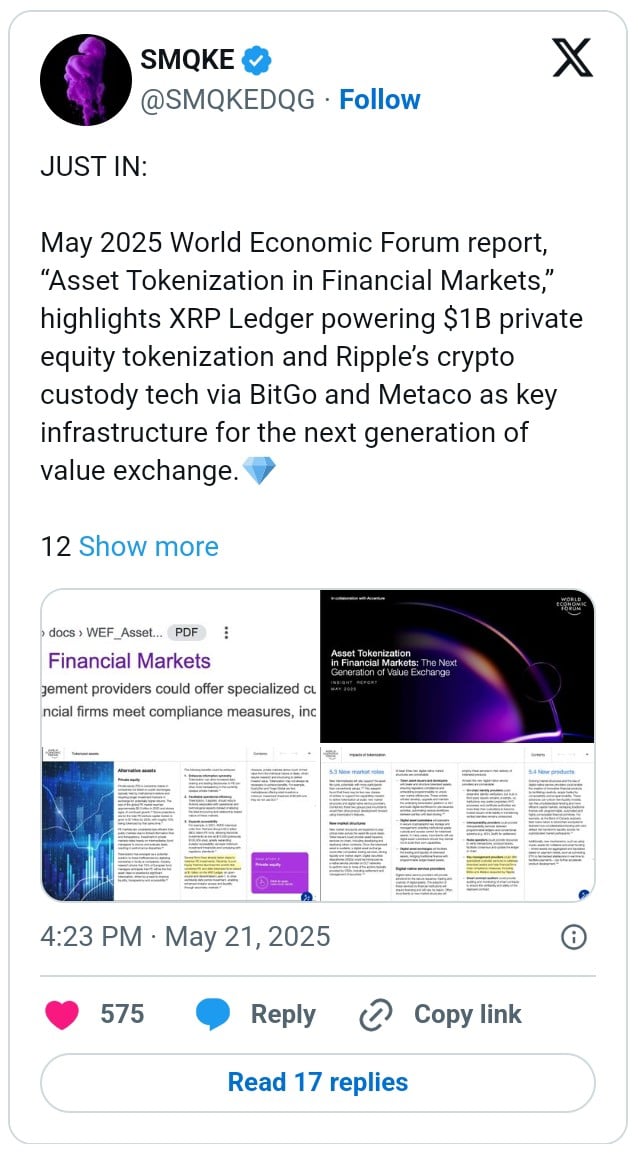- A research report mentions XRPL’s crucial role in asset tokenization in a recent collaboration with Aurum Equity Partners.
- Private Equity was estimated in the report to reach a valuation of $7 trillion by 2030.
XRP Ledger (XRPL) has once again earned a very important recognition in a World Economic Forum report for its role in asset tokenization.
In the report titled, “Asset Tokenization in Financial Markets,” XRPL was highlighted to have assisted Aurum Equity Partners in launching the first combined PE and debt-tokenized fund in the world. Interestingly, the benefits have been enormous as it “enables enhanced investor access and liquidity through the secondary market.”
Another part of the report highlights that key management providers “could offer specialized custodial service” for the safekeeping of tokenized assets as well as helping financial institutions meet compliance measures. With this, WEF made reference to BitGo and Metaco, which Ripple recently acquired.
Further reviewing the report, we found that tokenization has, over the years, offered a solution to the inefficiencies in Private Equity (PE) by digitizing ownership in funds and companies. Also, the size of the global PE market, which reached $5.3 trillion in 2023, is estimated to reach $7 trillion by 2030.

How XRPL is Redefining Asset Tokenization
XRPL has, over the years, gained recognition for its speed, enterprise-grade performance, and cost efficiency. As indicated in our earlier discussion, it has also undergone a technical upgrade to boost network performance and security.
However, it has been flagged down for its lack of a native, decentralized launchpad that is capable of hosting real-world businesses as well as tokenizing physical assets.
Rewriting this narrative, BlocScale Launchpad was recently reported to enable startups and traditional businesses to tokenize real-world assets on the XRPL. Basically, this market has also been predicted to reach trillions of dollars in the next few years.
In a recent study reported by CNF, Ripple and Boston Consulting Group (BCG) were said to have predicted that real-world asset tokenization could move from $0.6 trillion to $18.9 trillion by 2033. According to that report, this represents a 53% compound annual growth rate (CAGR).
In a different report, crypto researcher SMQKE pointed out a Boston University academic document that confirmed that XRP is a SWIFT alternative. As highlighted in our previous blog post, banks that adopt Ripple were reported to save up to 60% of their total processing cost.
Amidst the backdrop of this, XRP has surged by 0.69% in the last 24 hours to trade at $2.3. Despite the ongoing development, traders’ interest seems to have declined as trading volume fell by 20.7% in the last 24 hours. According to our recent analysis, XRP could, however, break through the $2.6 resistance level and subsequently make a huge leap to enter the $5 zone.
In a recent update, CNF also highlighted in a report that XRP could surge by 500% from its current position.

